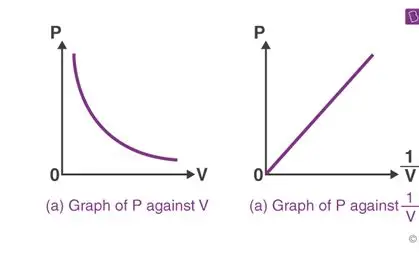gases
1/35
There's no tags or description
Looks like no tags are added yet.
Name | Mastery | Learn | Test | Matching | Spaced |
|---|
No study sessions yet.
36 Terms
what makes gases different to liquids and solids?
they can be compressed
what is boyle’s law?
pressure is inversely proportional to volume
P ∝ 1 / V

what does adiabatic mean?
closed system, so no energy is being transferred from or to the surroundings
what is charles’ law?
volume ∝ temperature
what is the pressure / gay-lussac law?
P ∝ T
what is an ideal gas?
one that obeys boyle’s law perfectly
what is a perfect gas?
one that almost obeys boyle’s law perfectly, and therefore can still be used in equations
which temperature scale is used in gas laws and why?
kelvin , because kelvin starts at the absolute zero whereas celsius is relative to whatever substance we’re considering
what is the temperature change in kelvin and celsius?
the same, +1K = +1C
volume and pressure
boyle’s law , P ∝ 1 / V
volume and temperature
charles’ law , V ∝ T
pressure and temperature
pressure / gay-lussac law , P ∝ T
ideal gas equation
p V = n R T
p = pressure
v = volume
n = mol number
R = gas constant, 8.31
T = temperature
p V = N k T
p = pressure
v = volume
N = number of molecules
k = boltzmann constant , 1.38 × 10–2
T = temperature
avogadro constant Na
1 mol = 6.02 × 1023 molecules
ratios
P1 V1 / n1 T1 = P2 V2 / n2 / T2
explain P1 V1 / n1 T1 = P2 V2 / n2 / T2
p V = n R T , so R = P V / n T. since R is a constant, this means P V / n T is the same before and after, therefore P1 V1 / n1 T1 = P2 V2 / n2 / T2
what does isothermic mean?
temperature is constant
what does isobanic mean?
pressure is constant
is n constant?
usually, unless we’re letting gas out / in
what is brownian motion?
the random movement of particles in a fluid
what are the 5 assumptions we make about ideal or perfect gases?
move with brownian motion
no attractive forces between particles
particle volume is negligible compared to container volume
all collisions are elastic
the duration of the collisions is negligible compared to the time between collisions
what is the time taken between the collision of a particle against a particular wall?
the time taken to travel two lengths of the container, as time between collisions is measured as opposed to collision time
what is the change of momentum for a particle colliding with a wall?
2 m u
collision force equation
F = 2 m u / (2 L U)
= m u2 / L
where L is the length of the box it travels across
pressure equation
P = force x area
= m u2 / Ly x Lx x Lz
= m u2 / V
what is rms?
root mean square, where N = number of molecules
why do we use rms?
because the mean velocity of the particles is zero
why is the mean velocity of particles zero?
because they travel in all directions equally
what is crms ?
the combination of speeds in all three directions
what is u2rms = ?
u2rms = 1/3 c2rms
what is urms = ?
urms = √ (u12 + u22 + u32 + …) / N
why is 1/3 used?
because the particles can travel 3 ways , the length, the width, and the depth
what is the kinetic theory equation?
P V = 1/3 N m c2
m = mass of 1 molecule
N m = total mass of gas
c = crms average speed of molecules
P = 1/3 p c2
as N M / V = density
3 k T = m c2
as p V = N k T and therefore N k T = 1/3 N m c2
Ek = 3/2 k T
Ek = kinetic energy of 1 molecule
from 3 k T = m c2 halved
when is work done on a gas?
when it is compressed
when is a gas doing work?
when it expands
what is the work done on a p-v graph?
the area under the graph (count the squares) / line
if isothermal (constant T), P1V1 = P2V2 (arrow going up the curve)
if isobaric (constant P), V1 / T1 = V2 / T2 , work done = P Δ V (block under the graph)
if at constant volume, P1 / T1 = P2 / T2 . it’s being cooled so no work done (arrow going straight down)